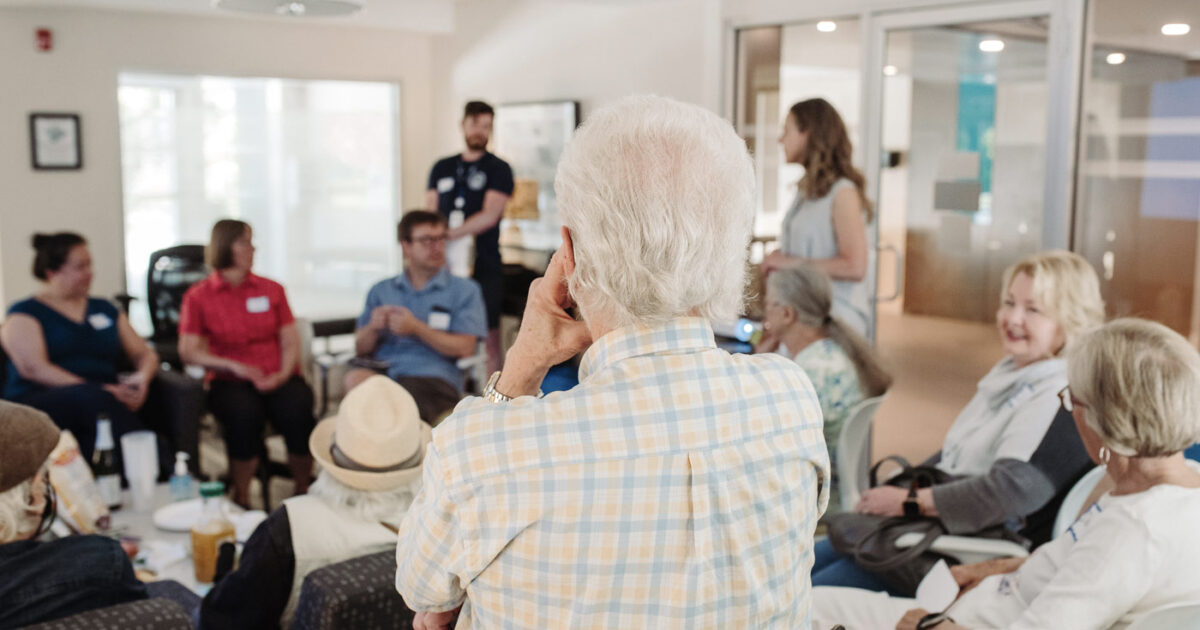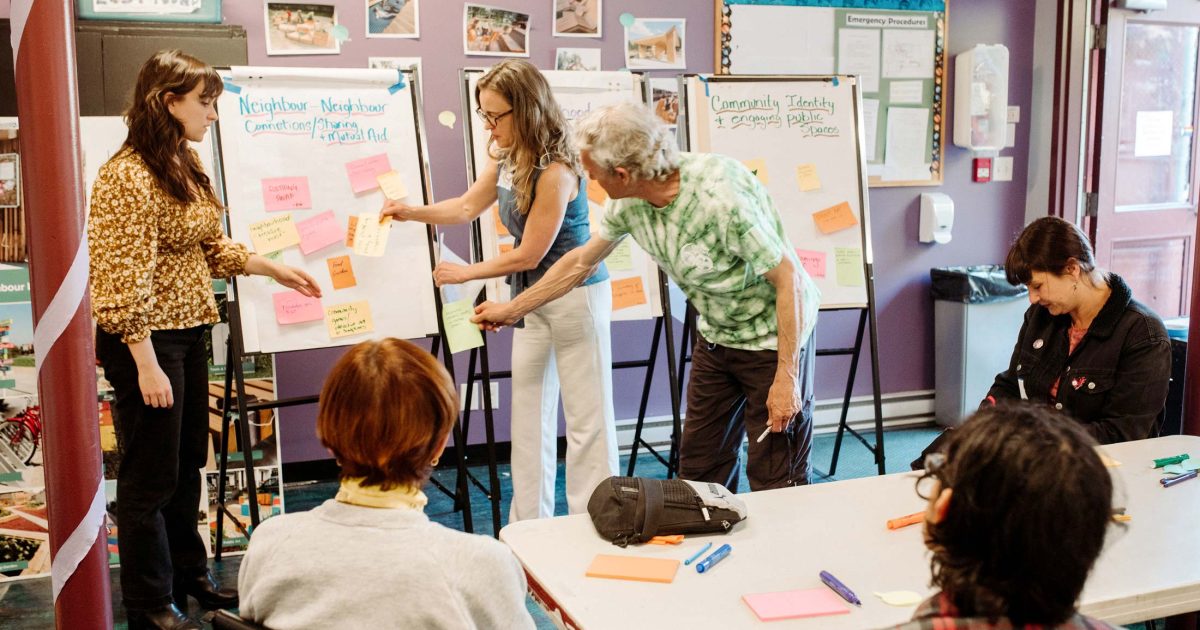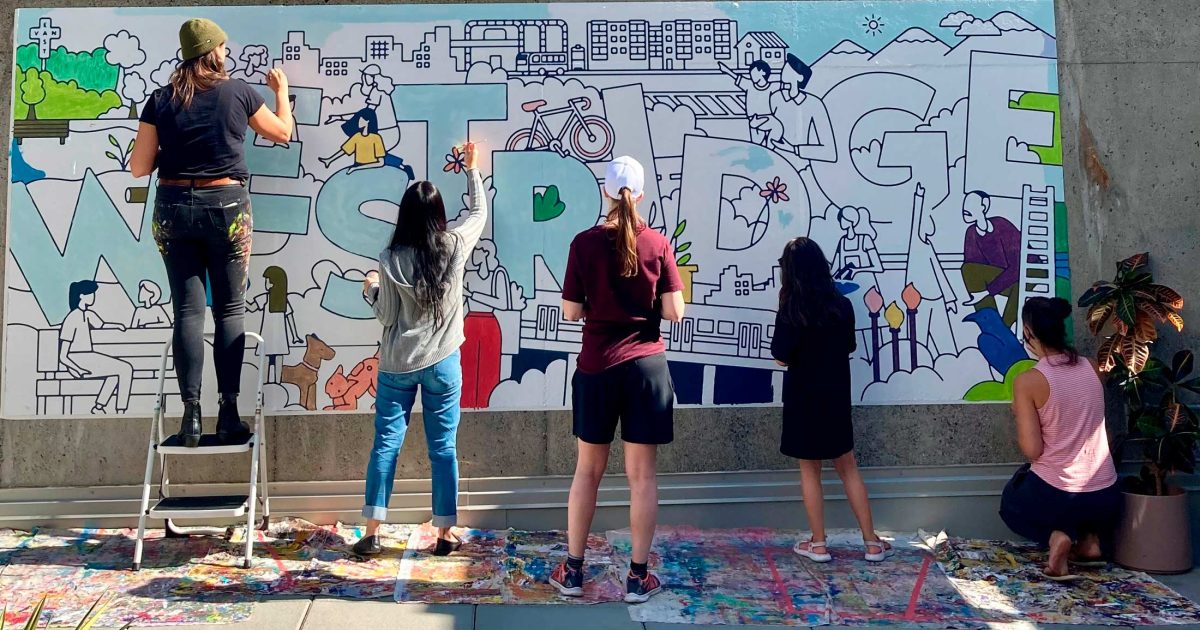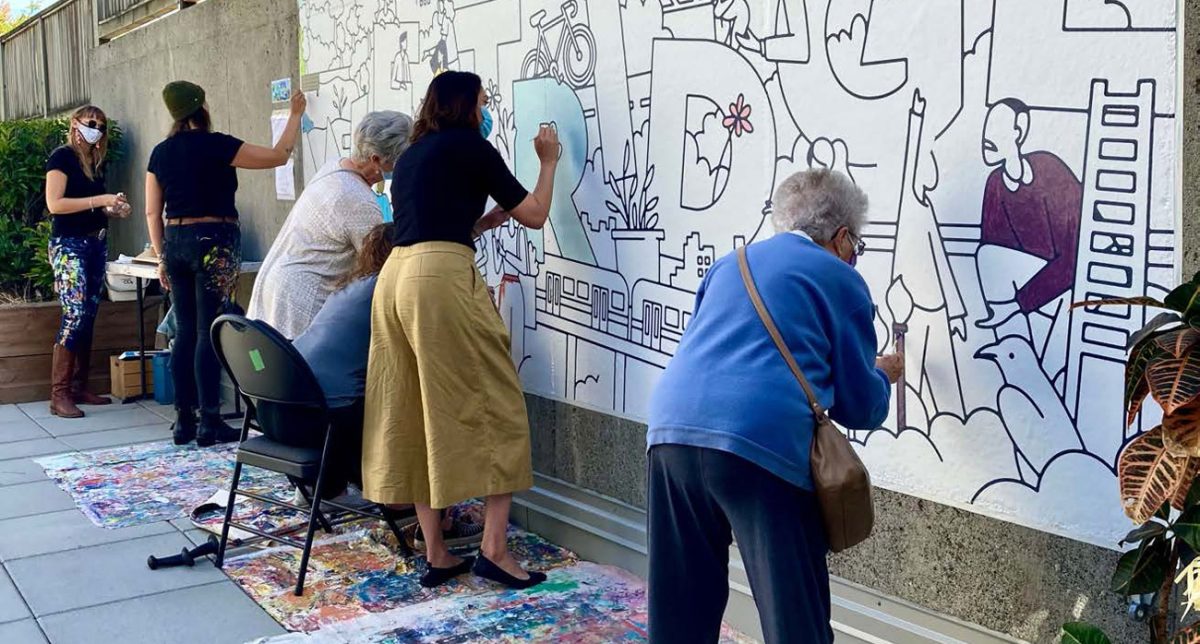Building better with feedback loops
Maura Chestnutt discusses how tenants are helping Catalyst design buildings that foster greater privacy, security, and community.

“Good sound insulation between suites is a key design feature for building community among residents,” says Maura Chestnutt, Catalyst Community Development Society’s ex-VP of Strategic Initiatives and now consultant. It may seem counterintuitive: Better separation leads to greater togetherness? But it’s one of many insights that the Vancouver non-profit has gathered through its “tenant-informed design” feedback process.
Catalyst is partnering with municipalities and other non-profits and charities to secure land and buildings and keep them affordable and under community ownership. They currently have eighteen sites around BC at various stages of development or occupancy. The decision to invite comments and suggestions from residents was based on the recognition that, as a combined developer, owner, and operator, Catalyst is uniquely positioned to benefit from and apply feedback on building design.
“There’s often a huge disconnect between builders and occupants. When the developer, the landlord, and the property manager are all separate, there isn’t an opportunity for a complete feedback loop,” says Chestnutt. “The goal with all of our developments is to meld the aesthetically beautiful with the practically functional, so it’s invaluable to find out if we’re achieving that.”
Many renters tend to be transient, so Chestnutt wondered how much interest there’d be – but she’s been enjoyably surprised. Through “town hall” meetings with residents four times a year – with covid-19 these are moving online – and inviting feedback through phone, email, and any other means, she says the findings have sometimes been surprising but always helpful.
…if you have a strong, comfortable sense of having your own space, of having control of your privacy, then engaging with your neighbours becomes a choice rather than something forced upon you through poor building design.
Residents at one building reported, for example, that the towering height of the bamboo plants fronting the street gave them a greater sense of security than ordinary hedges. In another building, while tenants were glad to have a designated room to park their bicycles, many young families desperately needed somewhere to park bike trailers, which never fit. And Catalyst learned the reason virtually all the tenants in one building had placed dark coverings over a small glass viewing panel next to their entrance doors: Their alignment gave outside visitors a view into tenants’ bathrooms!
But the feedback about sound attenuation was the most consistent and valuable, says Chestnutt. What Catalyst came to understand was, when residents complain about sound, they’re essentially complaining about their neighbours’ behaviors – and feeling trapped and annoyed by each other’s proximity isn’t a good way for neighbors to start building positive social relationships.
“On the other hand, if you have a strong, comfortable sense of having your own space, of having control of your privacy, then engaging with your neighbours becomes a choice rather than something forced upon you through poor building design,” says Chestnutt. “If it’s your choice when and how much to participate in the building’s community, there’s a higher chance you’re going to enjoy it and want to do it more.”
Chestnutt says fostering community can also have invaluable emotional impacts that can influence design and construction processes. For example, Catalyst staff have hosted housewarming parties for new buildings, where not only the tenants get invited, but many others who’ve been involved, including the construction workers, contractors, NGO partners, bankers, lenders, investors, municipal staff and councillors, and people living in the wider neighbourhood. “It’s been a fantastic experience. Some of the construction workers told us that in their decades of working in construction they’d never had the opportunity to actually meet people who were living in and enjoying their work,” says Chestnutt. “It felt like we were part of an old rural community where everyone helps raise the barn and then enjoys a huge celebration together.”









